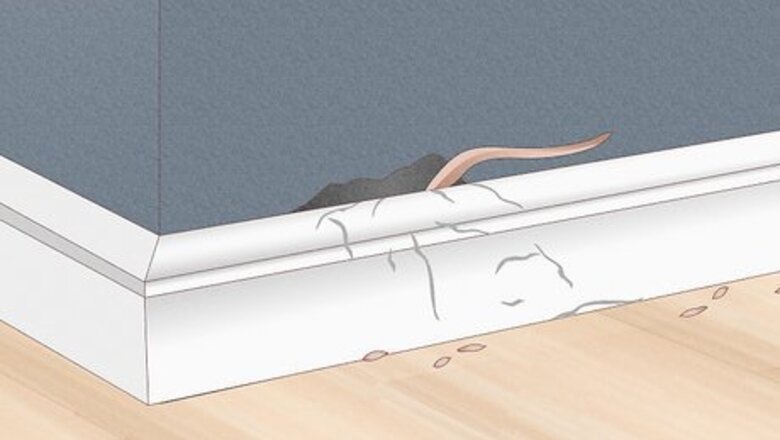
views
How do you know you have rats?
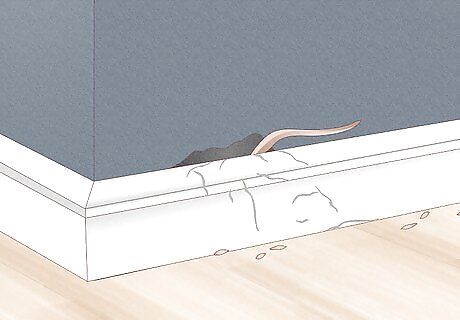
Rat sightings, droppings, and scratch marks are indicators you have rats. If you see a rat inside of your home, you’ve likely got a rat problem. They might be icky, but remember that rats are more scared of you than you are of them, so they’ll leave you alone when you spot them. Beyond that, here are a few of the key signs you’ve got a rat infestation on your hands Rice-sized poop. Scratching or scurrying sounds in the wall. Small nests made of paper and wood. Footprints or grease marks near corners. Scratches and bite marks.
Can you know how many rats are in your home?
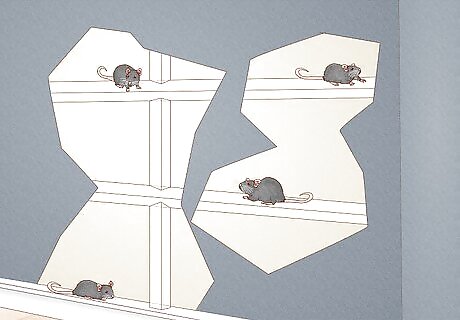
No, but you can definitely make an educated guess based on the signs. You’d have to rip some walls out and manually tag each rat to count the colony in its entirety. So, you can’t really know exactly how many rats you’re dealing with. However, you can get a really good sense for how bad an infestation is by looking at the intensity of the signs. Small urban colonies may only contain a few rats. However, if there’s enough food to sustain more rats, more will show up. Some colonies can sustain dozens of members.
Estimating the Size of the Infestation
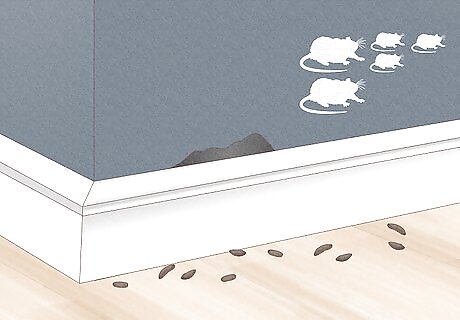
A variation in droppings size indicates a large colony. Rat droppings are rice-shaped, and normally around ⁄2 in (1.3 cm) in length. If you find rat droppings and they’re all different sizes, it’s a sign that there is a combination of younger and older rats. This implies you have a larger infestation on your hands. Rat poop carries all kinds of disease, so discard the poop in a paper towel and clean the surface with a bleach- or vinegar-based cleaner to disinfect the surface. Mouse poop is usually ⁄4–⁄8 inch (0.64–0.32 cm) in length. If you don’t find any droppings at all that are around ⁄2 in (1.3 cm), you may only have mice.
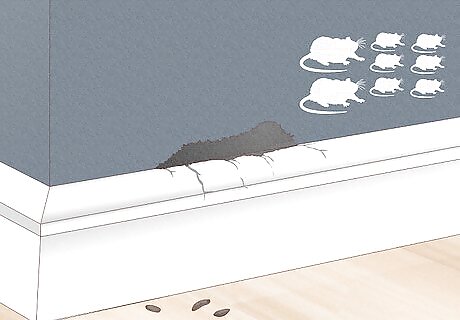
A lot of scratch and bite marks indicates a bigger rat infestation. Use the size and number of holes to determine the infestation. If stumble on the occasional scratch or bite in your flooring, it’s probably just a small colony. However, if you see large holes in your drywall in multiple rooms and there are corners of your wood furniture with large chunks missing, there are likely a large number of rats.

The size and number of rat nests demonstrate a larger problem. The presence of a nest alone means that there are probably a good number of rats in your home. However, if you find actual nests in your crawl space, rafters, or basement, check to see how big they are. Ask yourself, “How many rats could fit on this nest?” This should give you a sense for how many rats you have in your home. If you can’t find any nests, it’s possible the rats aren’t sleeping in your home and they’re going elsewhere every night to get some shut eye.

If the noise is keeping you up at night, there are likely a lot of rats. If you can hear things crawling, scratching, and gnawing inside of your walls, floors, and ceilings at all hours of the night, you’ve probably got a pretty big rat problem on your hand. If you only occasionally hear a little scurrying here and there, it’s likely only a handful of rats. Pay attention to where you’re hearing the noise, as well. If you hear noises in your walls and ceilings all over your home, the odds are higher that the infestation is fairly large.
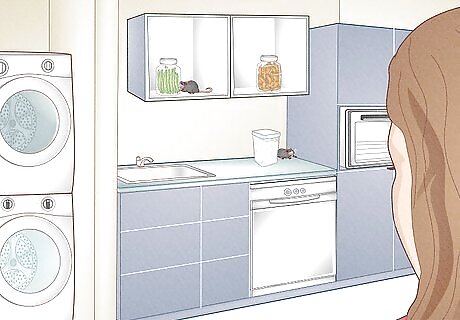
The number of rats you see tells you a lot about the colony. If you’ve only seen one rat in the past two weeks, your problem may not be particularly extensive. However, if you’re seeing rats every day or so, or you’ve turned on a light at night and 3-4 rats scurry, you’ve probably got a pretty extensive rat infestation on your hands. Rats go out of their way to stay out of sight and avoid you, so the more rats you see, the more likely it is that the infestation is pretty expansive.
How to Solve a Rat Infestation

Remove food and water sources by keeping a tidy home. The rats are in your home for a reason—they’ve got resources here. Remove those resources and the rats may go away on their own. Sweep your floors, store your trash outside in a sealed bin, and remove any standing sources of water. The cleaner you can keep your home, the more likely you are to keep rats out from running rampant. Fill in any gaps or openings where rats may be coming in. Patch holes in your drywall and seal exterior gaps with caulk or sealant. The harder it is for rats to get in, the more likely it is that the rats will go somewhere else.

Set up traps if you suspect you’ve got a smaller infestation. If you’ve got the sense that you’re only dealing with 1-5 rats, trapping them is the best way to go. Purchase some no-kill traps and set some bait, like peanut butter or bacon scraps, inside. When you capture the rats, you can either kill them or release them at least 1 mi (1.6 km) from your home. Glueboards work with mice, but they tend to be less than ideal for rats. Rats may be strong enough to keep moving around with a glue trap on them, or fight their way off of the trap entirely. Avoid using toxic bait. You’ll end up with smelly rat carcasses in your floorboards, walls, or crawlspaces.
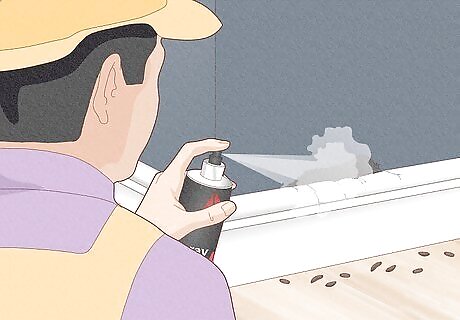
Contact a professional to tackle larger infestations. Rats carry all kinds of disease, and they can bite or scratch when they feel cornered. As such, it’s fairly difficult (and dangerous) for a non-professional to tackle a large rat infestation. Contact an exterminator or rodent control expert who has the skills and talents to remove a larger number of rats.
How do you know if rats are gone?

If the signs you have rats go away over time, the rats are gone. If there’s no more noise in your walls, the droppings stop showing up, and you don’t find any random holes in your drywall or cupboards, the rats are likely gone for good. The absence of any evidence is the most meaningful evidence of all, so don’t stop cleaning and checking traps until the major signs are gone.




















Comments
0 comment